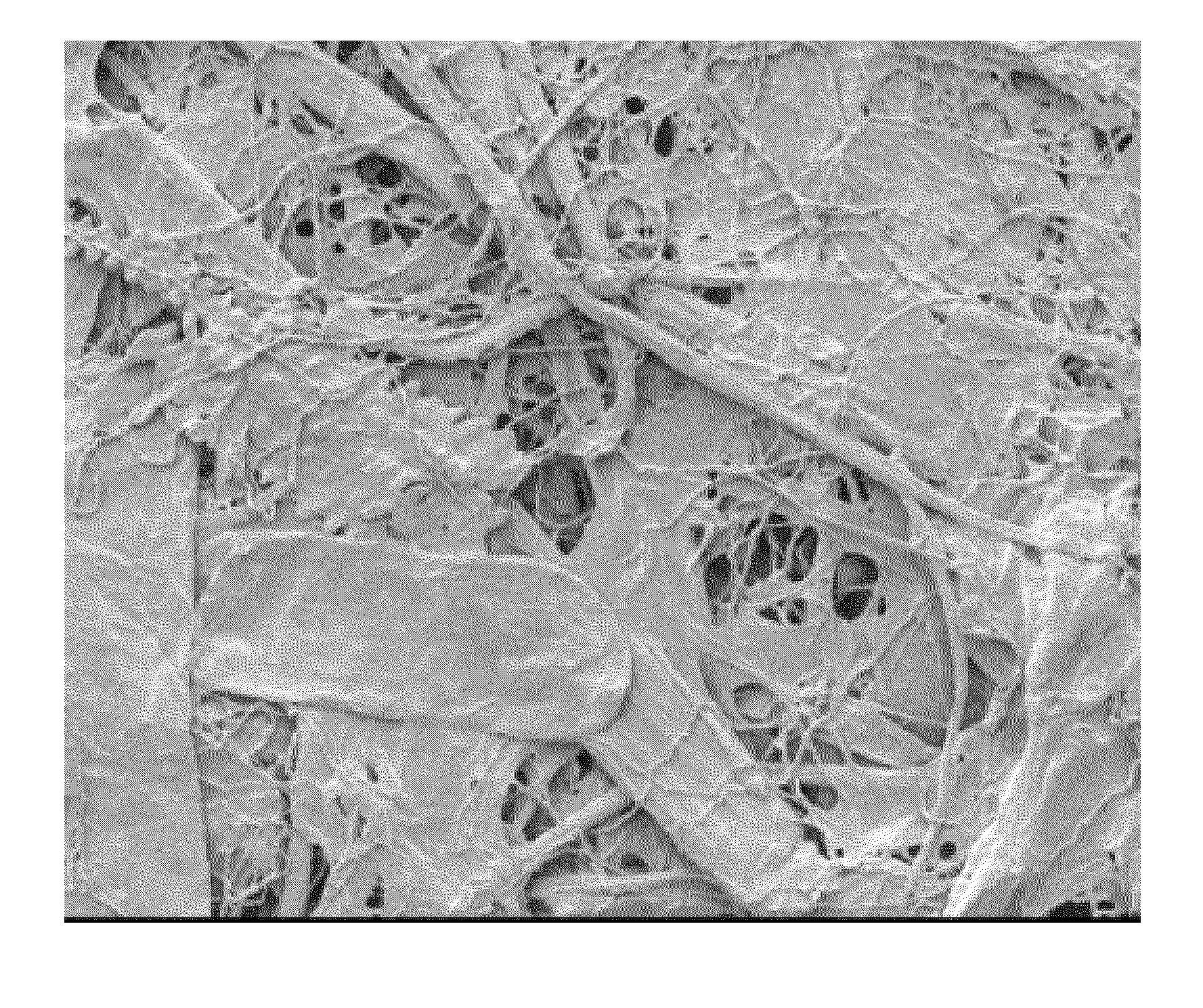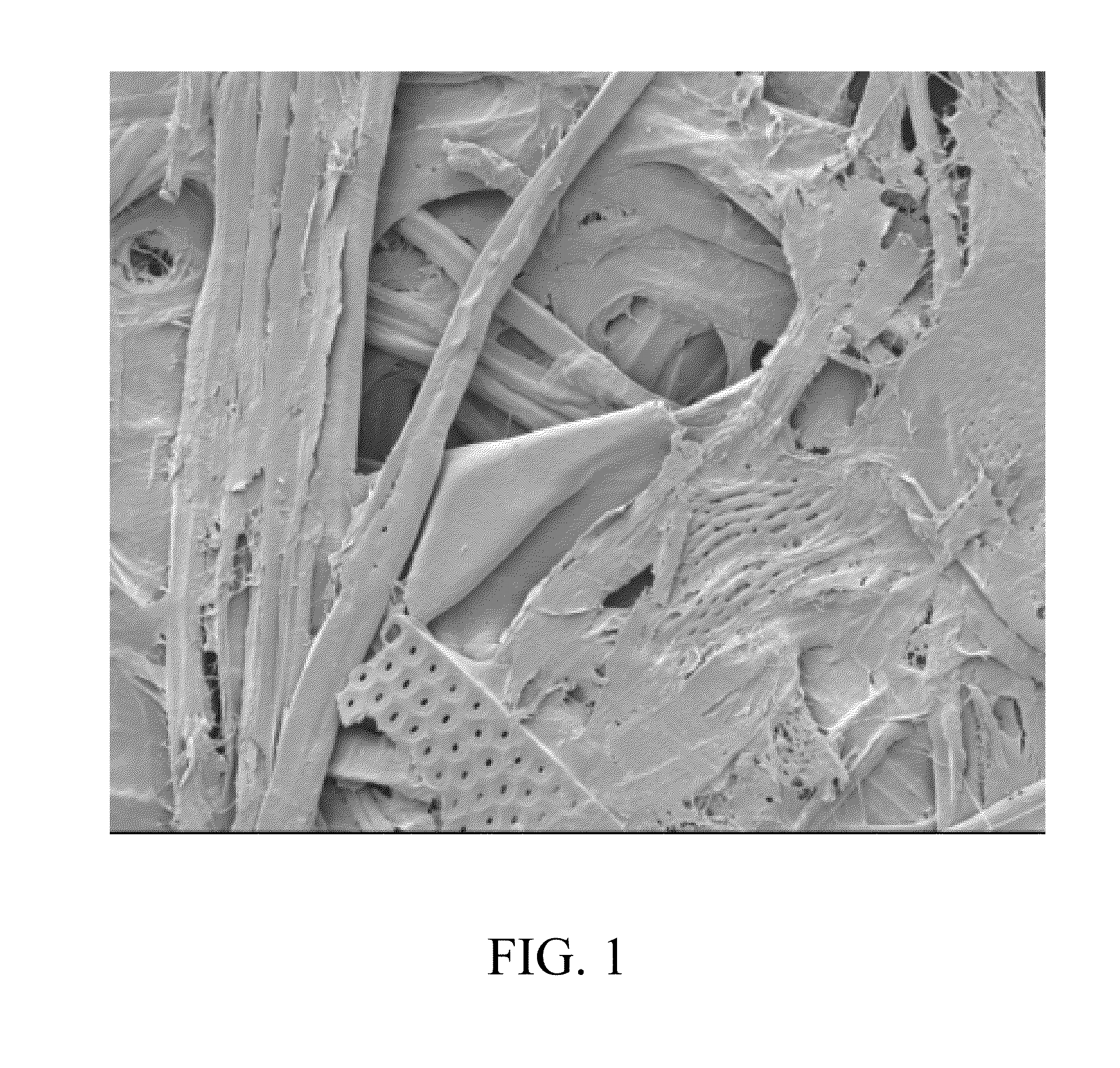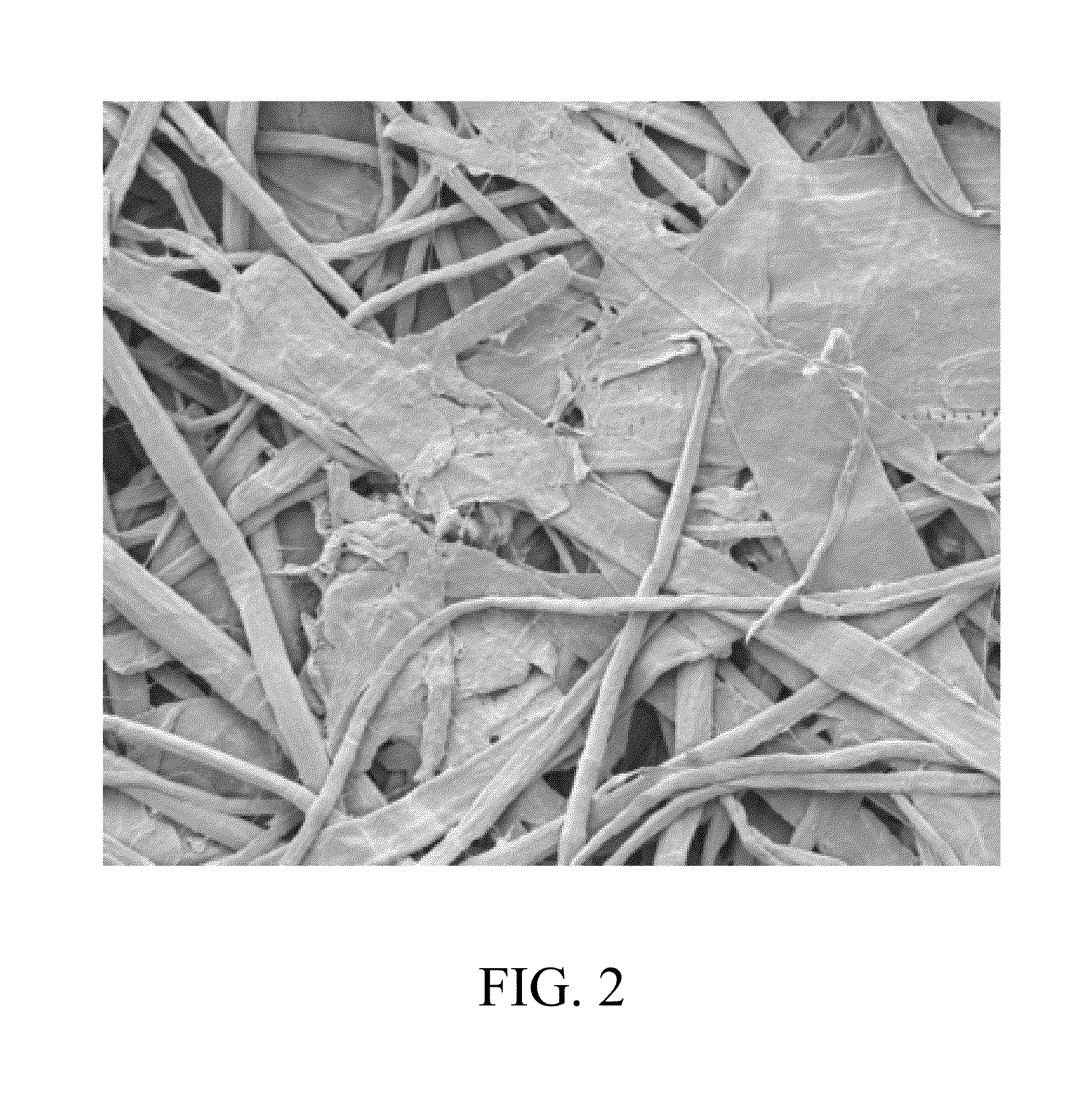Hybrid Fiber Compositions and Uses in Containerboard Packaging
a technology of hybrid fibers and compositions, applied in packaging, textiles and paper after-treatment, paper after-treatment, etc., can solve the problems of shortened recycled fibers, increased cost of recycled fibers, and increased weakened and contaminated fibers
- Summary
- Abstract
- Description
- Claims
- Application Information
AI Technical Summary
Benefits of technology
Problems solved by technology
Method used
Image
Examples
example 1
[0046]A hardwood pulp was made following a typical semi-chemical cook for corrugated medium. The hardwood chips used to make the pulp were standard northern hardwood species mixture, primarily consisting of Birch, Ash and Oak (60 / 30 / 10). Fifteen hundred oven dry grams of the mixed chips were put into a digester—Model M / K 602-2 (M / K Systems, Inc., Peabody, Mass.) with a 10% solution of sodium carbonate (Na2CO3), with a 4:1 liquor to wood ratio. The chips were ramped up to their cooking temperature of 125° C. for 60 minutes, cooked for 30 minutes at temperature and then cooled down. The cooked chips were put through a lab refiner—Model 105-A (Sprout-Waldron, Muncy, Pa.), then screened on a 0.02 cm slotted vibrating flat screen. The fibers were then centrifuged to remove water to make it ready for handsheet making.
example 2
[0047]The mixture of the pulp from Example 1 was used to make handsheets as a control. Ten handsheets were made for each code according to TAPPI T205, where a web-forming apparatus was specified and used. The handsheet basis weight was targeted to be 112 grams per square meter (gsm) with an oven dry weight of 2.24 grams for each handsheet. Actual sample basis weight showed a significant deviation. To minimize effect of basis weight for data comparison, index values are converted based on testing data and shown in Table 1, whereas Example 1 refers a mixture semi-chemical pulp made from Example 1, WS stands for wheat straw pulp, purchased from Shandong Pulp and Paper Co., Ltd. (Jinan, China) and algae refer to red algal fiber, purchased from Pegasus International (Daejeon, Republic of Korea).
example 3
[0048]A mixture of 70% from Example 1 and 30% non-wood alternative natural fibers (20% wheat straw pulp and 10% red algae fiber) was prepared to create handsheets. Other steps to make handsheets and parameters for handdsheets are similar to Example 2, including examples shown below. Therefore, they are not repeated for the sake of brevity.
PUM
| Property | Measurement | Unit |
|---|---|---|
| Fraction | aaaaa | aaaaa |
| Fraction | aaaaa | aaaaa |
| Fraction | aaaaa | aaaaa |
Abstract
Description
Claims
Application Information
 Login to View More
Login to View More - R&D
- Intellectual Property
- Life Sciences
- Materials
- Tech Scout
- Unparalleled Data Quality
- Higher Quality Content
- 60% Fewer Hallucinations
Browse by: Latest US Patents, China's latest patents, Technical Efficacy Thesaurus, Application Domain, Technology Topic, Popular Technical Reports.
© 2025 PatSnap. All rights reserved.Legal|Privacy policy|Modern Slavery Act Transparency Statement|Sitemap|About US| Contact US: help@patsnap.com



